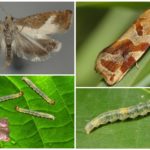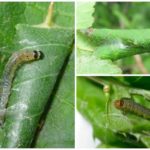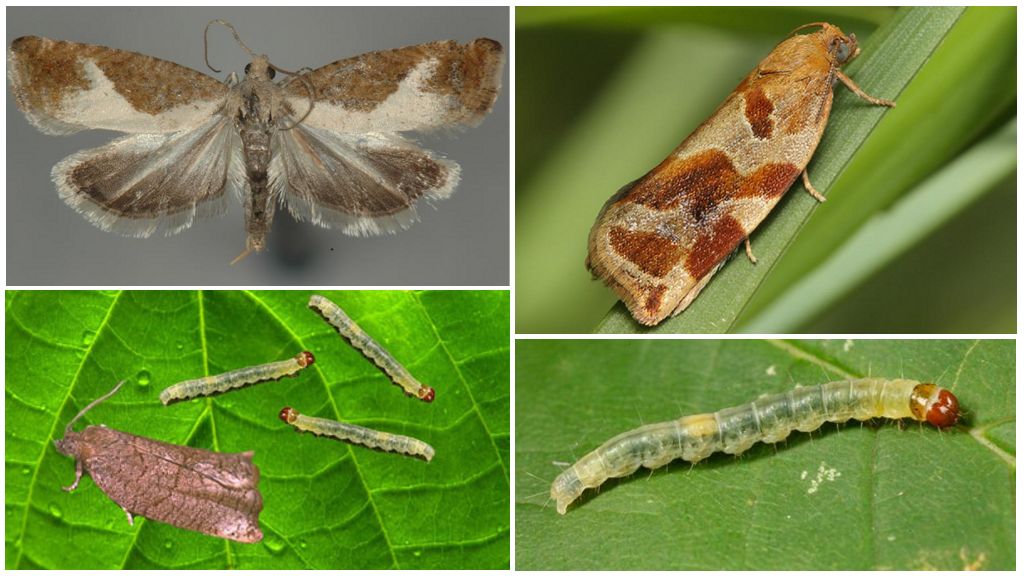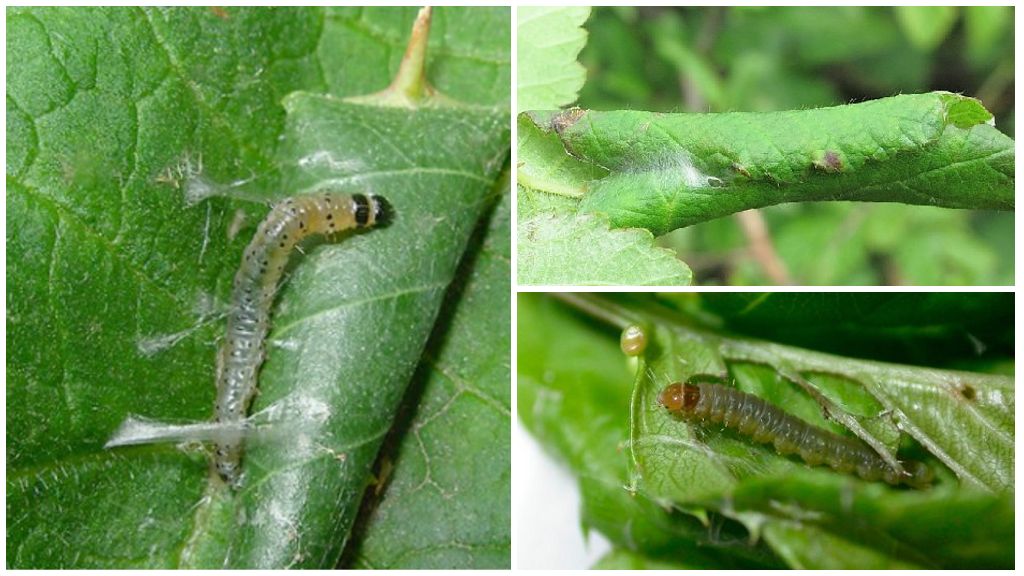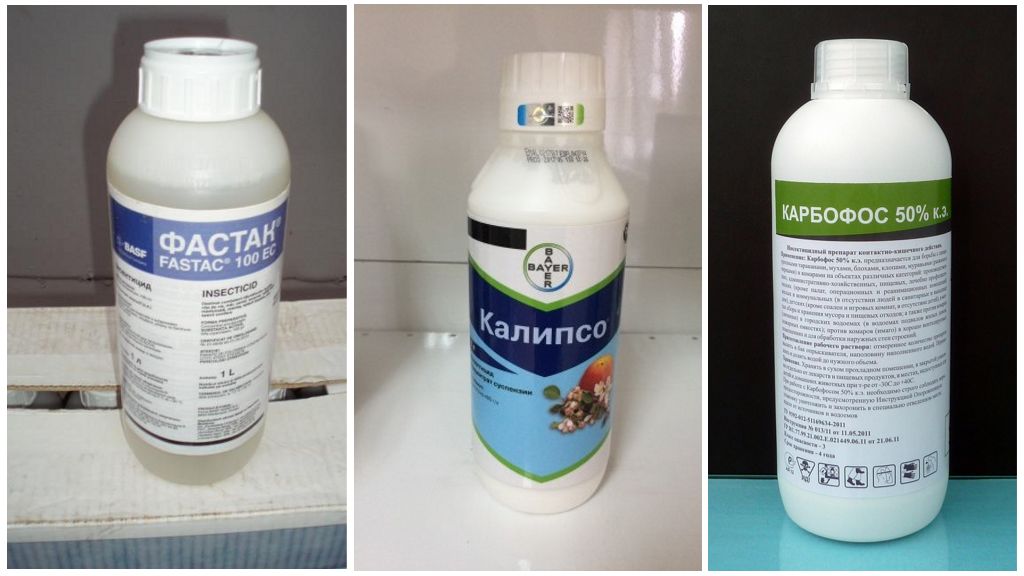How to deal with leafworm on fruit trees
Content
- Listovertka and its caterpillar
- Damage from the moth caterpillars
- Caterpillar Chemicals
The sheet worm is the most voracious insect of the Lepidoptera family, consisting of 2 thousand species. Most of them are pests that destroy crops, fruits, berries and ornamental plants. Various methods and techniques for dealing with leaflets on an apple tree will help gardeners save their plantings.
Face Worm: Lifestyle and Harm
This insect belongs to the family of butterflies that live on all continents and climatic zones, ranging from the tropical forests of Asia and ending with the middle belt of Europe and Russia. The sheet worm (Latin Tortricidae or Olethreutidae) looks like a moth 2.5 cm in size with a wingspan, the front wings are gray, and the back wings are gray-golden.
On a note!
Her little body is thick and covered with hair, wings can be folded horizontally on the back. From the side it looks like a butterfly is hiding them, which is typical only for this species.
Caterpillars are 12-20 mm in size; they have 16 legs, the color of the calf is yellow-green or brown, and the head is brown or black. A belt with hooks passes through her abdomen. It is caterpillars that are pests actively feeding on green parts of plants. As can be seen in the photo moths on an apple tree, they are wrapped in tubules of twisted leaves and cobwebs, where the further life cycle of their development takes place.
In addition to the apple leaf wrappers hit the pears, currant, other berry bushes and fruit trees.
Pest species
The most preferred trees for leafworms are apple trees, which are most affected by such pests. The most common types of butterflies:
- bud or helicopter - has white-yellow wings with stripes of a dark shade;
- frost moth-males have gray-brown wings and scales, in females they are more acute with dark brown spots;
- brown or apple - has brown-gray wings with a brown ornament on the front with an ocher rim, the most common in Russia and Europe;
- reticulate - females are painted in brown tones, and smaller males - in yellow-brown colors, fringe runs along the edge of the wings;
- subcortical moth - has bright spotty-striped wings of brown, orange or yellow colors, the front ones clearly have 7 spots, which is its hallmark;
- Rosan - decorated with trapezoidal wings of a yellow-brown color, with a terry covering of the whole body.
Life cycle
Moths are predisposed to mate within 3 days after they emerge from the pupae. When breeding, the butterfly lays oval, almost transparent eggs of up to 1 mm in size by 40-150 pcs.
On a note!
Egg-laying is usually located singly or in small groups in various places of the tree: on the leaves, young shoots or in the fork of the branches, in the crevices of the bark on the trunk, inside the ovaries, inflorescences and fruits.
Embryo development occurs 2 weeks, then a caterpillar is born. She begins to crawl on the branches, eating greens and gnawing fruit. Often caterpillars damage the ovary even before their blooming. By the beginning of autumn, they begin to prepare for the winter period, they find a place near a bud on an apple tree, a pear tree or other trees and shrubs, in order to build cocoons of cobwebs there.
In early spring, during the blooming of young greens and flower buds, the larvae are selected from cocoons. Having eaten fresh sprouts, they turn into a pupa 1 cm long, acquiring a brown color. Her body consists of segments, each of which has 2 rows of small spines. That is why in the spring you should regularly inspect all fruit crops in order to identify the caterpillars in time and process the apple, pear or peach from leafworms.
The departure of butterflies from pupae occurs from mid-June and lasts until August, the favorite time for hunting is twilight.
Harm from listworms and control
List of What feeds on the leafworm caterpillar?very extensive. This insect is omnivorous, affecting all fruit trees and shrubs.Having settled on the selected tree, the apple leaf-worm eats away the leaves, from which they begin to curl. Contaminated cobweb damaged leaves resemble friable lumps. Eating fruits, the caterpillar leaves furrows and grooves on them.
Signs of a lesion depending on the season:
| Period | Habitat | Signs of defeat |
|---|---|---|
| March, April | Caterpillars settle after wintering on buds and young shoots | You can see the web on the inflorescences, buds and greens, which are partially united |
| May - the beginning of June | Pupation of caterpillars among the leaves | Damaged green parts are rolled into a tube, in the forks of the branches and on the fruits are shelters from the web |
| June - mid July | Among the leaves, in the bark of a tree are pupae | Silver and white cobweb visible on shoots |
| The end of July - the middle of August. | Butterflies start flying | |
| August - mid September | Butterflies form eggs on both sides. | Ovipositions look like darkening on the surface of leaves, which are covered with a wet bloom from leafworm secretions. |
| From late September to early October | Caterpillars are derived from egg-laying, which will then winter. | Visible and coiled leaves and fruits tangled with cobwebs |
| October - March | Caterpillars winter |
Active struggle with the leafworm on fruit trees should be carried out throughout the summer season in order to save their green parts and harvest from destruction. To get rid of any kinds of caterpillars in the garden, used mechanical, folk and chemical methods aimed at the destruction of larvae on apples, pears and other cultures.
Folk methods of salvation
The struggle with the mural folk remedies includes:
- manual egg-laying and destruction, in some situations it is even recommended to cut them together with bark or branches;
- destruction of damaged and twisted leaves with caterpillars, which is recommended to wear gloves; then everything needs to be burned away from the garden plot;
- the manufacture of pheromone traps-tanks: at night they are fixed on the trees, pouring inside the liquid in the fermentation stage (kvass, molasses, compotes), which then get butterflies attracted by this smell;
- the belt for trees is made of fabric on which a heated mixture of 1 tbsp is applied.sunflower oil, 100 g of wax or resin, 100 g of grease, cardboard or other material is placed underneath, so that the substance does not fall on the tree bark;
- after flowering the tree is recommended to be sprayed with a plant extract of wormwood, tobacco, or tops of potatoes and tomatoes;
- feeding on the site of incoming birds that feed on harmful insects and their larvae.
On a note!
The decision on the use of chemical insecticides is made only with a strong defeat of trees and a large number of leafworms. The indicator is the counting of caterpillars sitting in buds: if out of 25 outlets inspected in 5, the larvae sit, then the garden should be treated with insecticides.
Chemical control agents
Chemical insecticides are the most effective means of moths on fruit trees, because they have a wide range of effects on various types of insects. Spraying can be used in any growing season of apple and other fruit trees.
Popular drugs from brown leafworm and other types of this pest:
- Dimilin is an insecticidal agent with a contact-intestinal action, is low toxic and low-hazardous for people and beneficial insects, the duration of protection reaches 1.5 months;
- Ditox - a concentrated emulsion containing an insecticide that acts on a wide range of pests, is not washed off by rain, destroys pests within 3 hours after treatment, is safe for people and bees;
- Bayer Calypso - sold in suspension, destroys leaf-eating and sucking insects, the duration of action is 1 month;
- Fastak - concentrated emulsion, effective against pests at all stages of the life cycle and helps get rid of the leafworm on apple and other fruit crops; it is necessary to process all green parts of fruit crops with a prepared solution; it is resistant to washing off by rain and high temperature;
- Avant is an effective innovative means of contact-intestinal action, acting at all stages of development, from eggs to caterpillars.
In June, it is possible to fight with the leafwrap on apple trees, when the caterpillars hid in twisted leaves and flowers, with insecticidal preparations: Alfatsin, Ivanhoe, Accord, Altyn, Karate Zeon, Lyambda-S, etc.They contain synthetic pyrethroid substances that are effective at temperatures up to + 23 ° C, so they are not used in the hotter months.
It is recommended to fight the leafworm in the garden with the help of chemicals in several stages: before and after flowering in the spring months or in the fall. During the period of setting and ripening of fruits on apples, pears and other fruits, it is recommended to use only biological preparations that are safe for people and beneficial insects and do not affect the future harvest:
- Phytoverm is a bioinsecticide in the form of an emulsion concentrate, they can process trees from the leafworm after flowering in the fruiting phase, efficiency increases with increasing temperature, is not washed away by precipitations, is economically advantageous due to low consumption;
- Lepidocide, a biological insecticide that is produced in powder, before sprinkling an apple and other fruits, it should be diluted with water, and can be used during all vegetation phases to destroy lepidopteran pests.
Important!
Gardeners must take into account that pests can get used to drugs used several times in a row.Therefore, the treatment of apple and other fruit crops should be carried out alternately with various insecticides.
It is necessary to take into account that the measures to combat the leafworm on peach, apple, pear similar to the above. These folk methods and chemical means for the destruction of such pests can be used for all fruit trees and shrubs.

